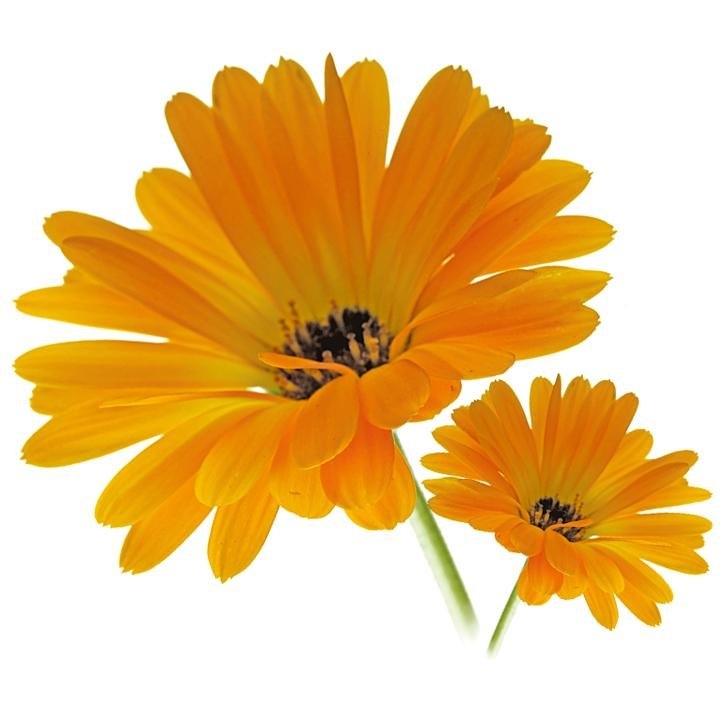Herbaceous, annual, pubescent plant, 0.35-
Blooming: June-August. The plant is indigenous of central and eastern
The flowers.
Marigold flowers consist of completely open flowers, separated from the receptacle, dried, whole or cut of cultivated variety and double blooming of Calendula officinalis L. contain no less than 0.4 % of flavonoids, figured out as a hyperoside (C21H20O12, Mr 464,4) in relation to the dried drug.
Internal use
External use
It is used as a coloring in cosmetic products and in food processing as a natural fat coloring and saffron substitute. It is added to fowl feed to give more vivid color to yolks.
Real Farmacopea Española, Suplemento 1999.
British Herbal Pharmacopoeia 1983.
Plantas Medicinales. Thérapeutique-Toxicité. Christiane Vigneau. Masson, Paris 1985.
Herbal Drugs and Phytopharmaceuticals. Norman Grainger Bisset (Ed). Max Wichtl. CRC Press.1994.
Plantas Medicinales y Drogas Vegetales para infusión y tisana. Edición española a cargo de: Salvador Cañogueral, Roser Vila, Max Wichtl.1998.
Plantas Medicinales. Margarita Fernandez y Ana Nieto. Ed Universidad de Navarra. EUNSA 1982.
Catálogo de Plantas Medicinales. Consejo General de Colegios Oficiales de Farmacéuticos. 2003.
100 Plantes Medicinales. Max Rombi. Romart 1998.
The Complete German Commission E Monographs. Therapeutic Guide To Herbal Medicines. Mark Blumenthal. American Botanical Council 1998.
Pharmacognosy, Phytochemistry, Medicinal Plants. Jean Bruneton. Lavoisier Publishing.
Fitoterapia Aplicada.J.B. Peris, G. Stübing, B.Vanaclocha. Colegio Oficial de Farmacéuticos de Valencia 1995.
Fitoterapia: Vademecum de Prescripción. Plantas Medicinales. B. Vanaclocha, S. Cañigueral. Editorial Masson. 4ª edición.
Plantas Medicinales. El Dioscórides Renovado. Pio Font Quer.
Guía de Campo de las Flores de Europa.Oleg Polunin. Ediciones Omega S.A. Barcelona, 1977.
Pharmacognosy 9th edition. Varro E. Tyler – Lynn R. Brady – James E. Robbers.
